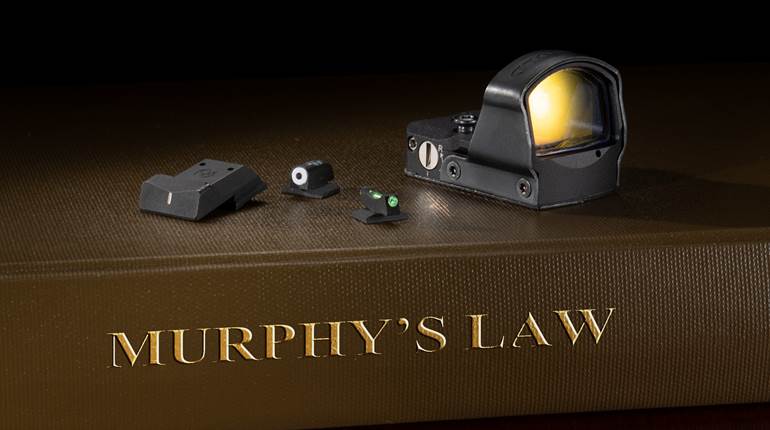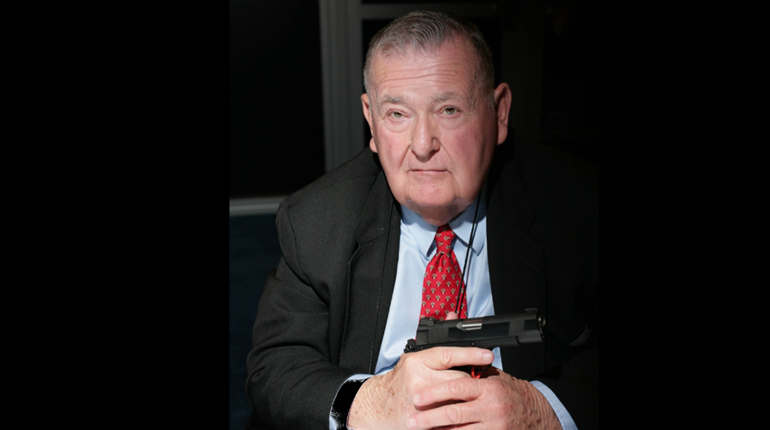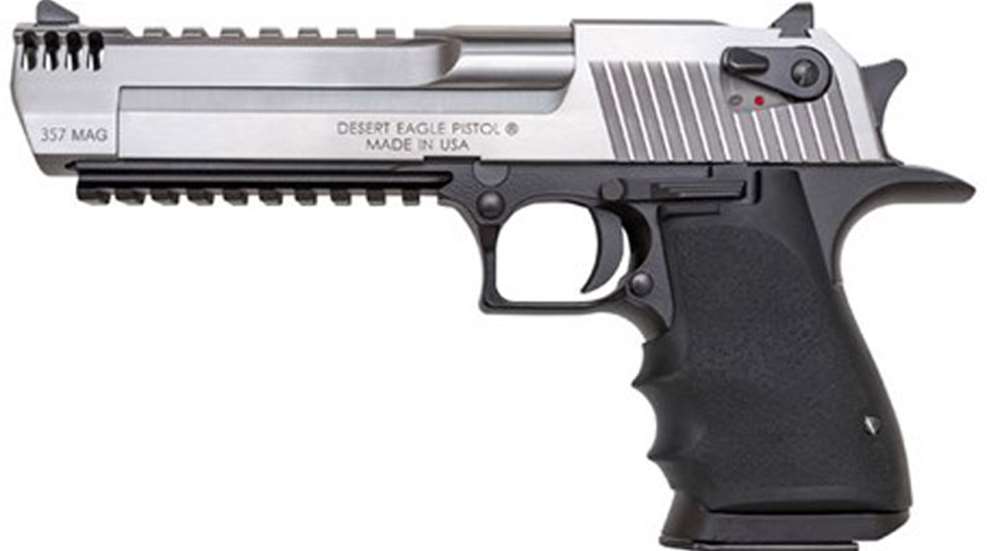
They don't call them firearms for nothing. Inside every cartridge, there is a small bit of gunpowder that ignites by the action of a primer in the base of the cartridge. That primer sends a brief jet of flame that ignites the powder which burns (not explodes) very quickly. This fire generates a tremendous amount of gas that expands in all directions including forward against the base of the bullet. It is here that there is some relief, because the pressure causes the bullet to break loose from the cartridge case and progress down the barrel, where it is forced to spin by the influence of the rifling in a tight-fitting bore. It is this powder gas that makes any firearm—from a farm boy's .22 Short to the 16-inchers on the World War II battleships—actually work. Pretty nifty stuff, this powder gas. 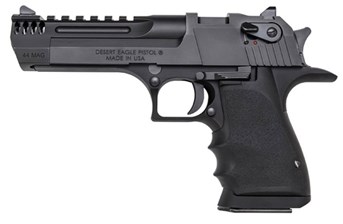
The gun's power is a product of the bullet size and weight, as well as the velocity you wish to achieve. The powder charge must be increased to step up the bullet speed. There are a number of other factors involved, like the powder's burning rate, but this is the basis of firearms internal ballistic performance. Burn powder, make gas, push bullet out of barrel. An over-simplification to be sure, but it has to happen very quickly. Gas produced after the bullet exits the firearm's muzzle is wasted, so the maker uses just enough powder to make the bullet achieve the desired velocity right at the muzzle. Gas makes the firearm send a projectile downrange. But some of that gas can be used for another purpose—operate those firearms designed to automatically reload their own chambers. Most of the guns using powder gas to operate the mechanism are rifles and machine guns. In the case of the semi-automatic pistol, only a few have used gas operation. I believe the only one in current production is the Desert Eagle. A very large and heavy pistol, the Eagle is well suited for the outdoorsman, but is far too massive for daily carry.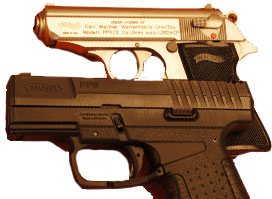
Modern semi-automatic pistols almost always fall into one of two categories—blowback or recoil-operated. The distinction between the two has been explained many times in these pages, so we will be brief. A recoil-operated pistol includes some form of mechanical lock to hold the action closed until pressure drops. It is usually a little larger and more complicated arm than the blowback gun, which combines a strong recoil spring with the slide's inertial weight to deal with the powder gas-developed pressure. 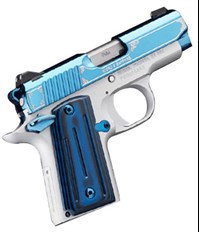
For many years, we have understood that simple blowback systems should not be employed on 9 mm or larger calibers, although it has been tried many times. Traditionally (and logically) the upper limit of blowback pistol performance lies with .380 Auto calibers. However, we are in a fiercely competitive carry gun market where the various makers look at those slim little blowback .380s and wonder if they could possibly make them up in our most popular cartridge, the 9 mm Luger. In the last few years, the makers have made great strides in the miniaturization of recoil-operated 9 mm hideout guns, so much so that I don't really understand why they are playing with what I call the “pneumatic alternative.”
The pneumatic alternative is better known as the gas-delayed blowback (GDB). Don't confuse it with a gas-operated system where trapped powder gas causes the mechanism to cycle. GDB pistols do pretty much the opposite—use a small amount of powder gas to hold the blowback action of a simple pistol closed until the bullet exits the barrel. I can't think of any one of the several GDB pistols that have been made since World War II that have been successfully chambered in anything other than 9 mm caliber. The biggest reason for using this style of operation is simply the fact that it is mechanically simple and can be made into a sleek, compact and concealable pistol. That style of gun is undoubtedly the most popular auto on the market these days. Let's take a look at how they work before checking out their history and surveying the various models.
The gas-delayed blowback pistol resembles the plain blowback in most ways—typical slide, fixed barrel, simple recoil spring, etc. Most of them have an additional part in the form of a rod or piston linked to the lower front edge of the slide and running back along the underside of the barrel. The rod is a slip fit in a cylindrical gas chamber in the pistol's receiver. There's a port in the barrel that runs down into the gas chamber. When fired, the gun allows part of the powder gas to vent down into the port and the chamber. Pressure pushes in all directions, including forward against the end of the piston. The recoiling slide cannot move rearward because gas pressure on the piston is keeping it closed. That is, until the bullet exits the muzzle and the system de-pressurizes. At this point, the gun is a simple blowback, recoiling against the recoil spring in typical style. It is simple and direct and usually works quite well.
Although I have discovered some vague references to earlier GDB guns in researching the topic, my best sources tell us that the principle was developed to near production levels by German designers. In the last years of World War II, they were tasked to build more and less costly weapons of all types. That applies to pistols as well as rifles, submachine guns, etc. A gun designed by Mauser and made with largely folded sheet metal technology used the GDB concept. Although crude, the Volkspistole was reputed to work quite well. It was never produced in quantity and further development came to a screeching halt with the defeat of Nazi Germany in 1945. In the late 1940s, the Mauser factory came back to life making various non-firearm products, a status which eventually changed back to the crafting of fine small arms. Under the Heckler & Koch label, a series of new and innovative pistol designs appeared. This included a new police and military service auto called the HK P7 in 9 mm. It was a gas-delayed blowback, distinguished as much by the unique squeeze-cocked single action operating system as the GDB breeching.
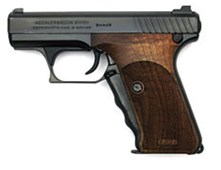 The HK P7M8 pistol (and later high capacity P7M13) was unquestionably the most successful gas-delayed blowback ever made. The pistol was made by the tens of thousands and was even licensed to other non-German plants. It was not fully appreciated in the U.S., but does enjoy a sort of cult-favorite status here. It is quite compact, but comes from an era when pistols were heavy because they were made of steel. Another gun came along a few years later and got a lot of initial attention.
The HK P7M8 pistol (and later high capacity P7M13) was unquestionably the most successful gas-delayed blowback ever made. The pistol was made by the tens of thousands and was even licensed to other non-German plants. It was not fully appreciated in the U.S., but does enjoy a sort of cult-favorite status here. It is quite compact, but comes from an era when pistols were heavy because they were made of steel. Another gun came along a few years later and got a lot of initial attention.
It was an Austrian design and initially made in the U.S. Called the Rogak, this gun was made with a great many flaws and was never produced in quantity. When Steyr of Austria began making the gun as the Steyr GB, it was a great firearm. A very large handgun, the GB has an 18-round magazine and a very strong gas system. This one differed from all other GDBs in that the gas chamber was around the barrel with gas bled off at roughly the midpoint in the barrel. I had one of these for evaluation thirty-plus years ago and felt it was a superior firearm. A few of these found their way to early SpecOps armories and were well received.
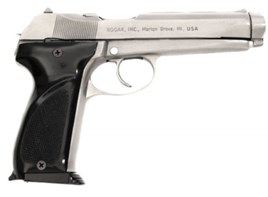
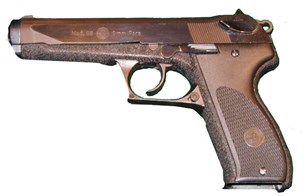
Rogak (left) and Steyr GB pistols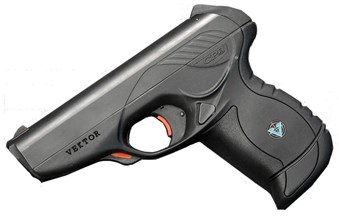
A few other GDB pistols were made and marketed with varying degrees of success. The South Africans made a really futuristic 9 mm polymer frame, gas-delayed blowback called the Vektor. It may have been one of the more pocketable GDB designs ever, with swooping curves and no sharp edges, but it failed in America to recalls and poor customer service. Too bad—the gun was sleek. Another gun had two incarnations and even an initial try-out with Smith & Wesson. The Stealth was a straightforward polymer gun from Florida's Heritage Arms. It used S&W 6900 magazines and really worked well. It was dropped by the maker for unknown reasons, only to re-appear as the Wilson ADP and still working quite well. 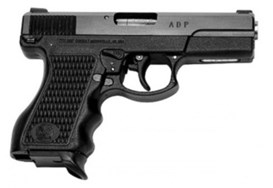 The ADP was supposed to stand for “Advanced Defense Pistol.” Oddly enough, ADP are the initials of the enigmatic designer, Alex DuPlessis. I had samples of both variants and they were inexpensive guns that worked. One more gun of this general size and shape was the more recent Arsenal P-M02, made in Bulgaria.
The ADP was supposed to stand for “Advanced Defense Pistol.” Oddly enough, ADP are the initials of the enigmatic designer, Alex DuPlessis. I had samples of both variants and they were inexpensive guns that worked. One more gun of this general size and shape was the more recent Arsenal P-M02, made in Bulgaria.
I was unable to get my hands on the Chinese M77 when they were current, but the data and description, readily available on the internet, show a 9 mm GDB with a host of special features. It should be obvious that the concept is fairly widely used and there may even be other pistols with this system that we just haven't heard about. Currently, the only one readily available to American handgunners is the new Walther CCP. 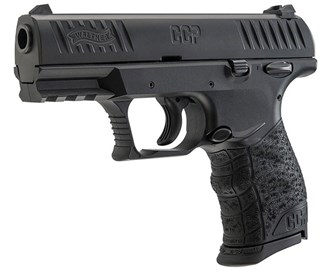 I had the pleasure of doing a story for the American Rifleman and came away from the experience with respect for the pistol. A medium, personal sized single-column 9mm that is easy to own and easy to shoot. Its GDB system, like the DuPlessis' has a clever way to use the last part of the gun's gas piston stroke to buffer the recoil. Clever.
I had the pleasure of doing a story for the American Rifleman and came away from the experience with respect for the pistol. A medium, personal sized single-column 9mm that is easy to own and easy to shoot. Its GDB system, like the DuPlessis' has a clever way to use the last part of the gun's gas piston stroke to buffer the recoil. Clever.
But consider one fact—all of these pistols are 9 mm Lugers. Heckler & Koch chambered the P7 series in .40 S&W. In order to get the gun to work and enjoy a reasonable service life, they had to add a whopping 13½ ounces of weight to the slide, making the gun nearly impossible to carry. This tells me that trying to use the gas-delayed blowback for a cartridge any hotter than 9 mm is inadvisable. Within its limits, the 9 mm GDB is a great way to lower the weight and bulk of pocket-sized defensive autos.













